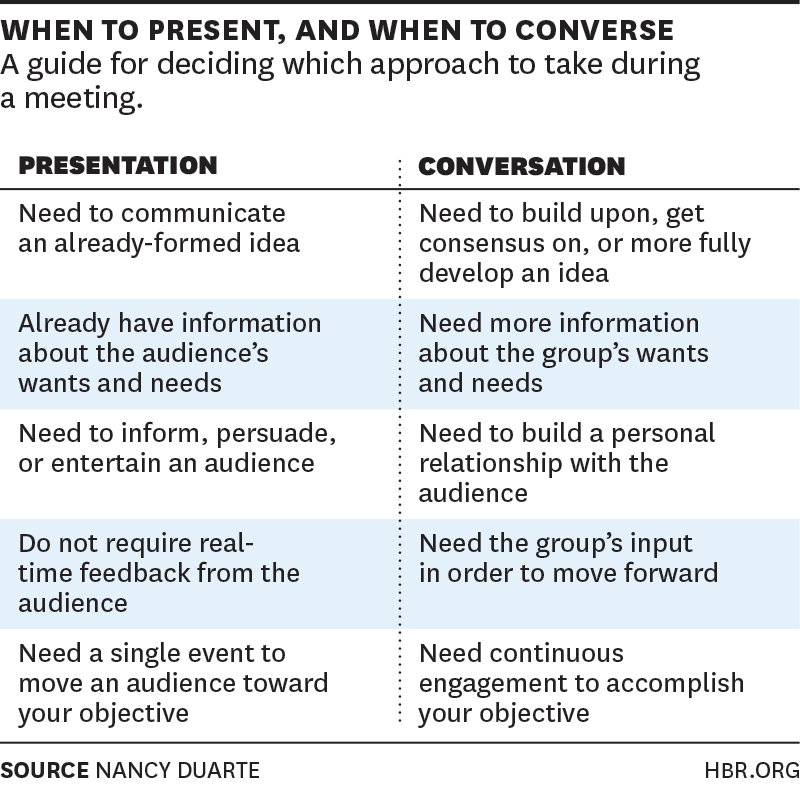This research into the human toll of too many meetings is a real eye-opener. If it’s one thing development officers do — it’s meetings! Meetings with volunteers, donors, committee chairs, colleagues, and department heads, etc. While most development officers do not work in organizational structures this large, we could all benefit from a few less meetings — but which ones?
All the Charts, Tables, and Checklists You Need to Conduct Better Meetings
The ripple effects of too many meetings can be astonishing. Take this quick and horrifying interactive: It shows how a weekly excom meeting at one company generated a total of 300,000 person hours per year to support it:
- One weekly Excom Meeting accounts for 7,000 hours a Year.
The Weekly Status Meeting: At the excom meeting senior-level staff provide updates on all phases of the business. It uses 7,000 person hours of executives’ time annually. To prepare for this meeting, individual excom members need to meet with unit chiefs.
- 11 Unit Meetings accounts for 20,000 hours a year.
- 21 Team Meetings accounts for 63,000 hours a year.
Each of 21 teams spends 3,000 hours per year in their meetings. These meetings take more time on average than others, because they have to synthesize information from several prep meetings.
- 130 Preparatory Meetings accounts for 210,000 hours a year.
More than 130 meetings, each usurping more than 1,500 hours per year of workers’ time, support the team meetings.
- Annual total: 300,000 hours a year
As astonishing as this chart may seem — 300,000 person hours supporting one weekly excom meeting — it’s important to remember that it doesn’t include the work time spent preparing for meetings. Research shows that 15% of an organization’s collective time is spent in meetings — a percentage that has increased every year since 2008. No amount of money can buy back that time. It must be treated more preciously.
First, of course, you have to decide whether you need a meeting in the first place:
No gathering required? Great. But if you wind up at the far-right of the decision tree, it’s time to start thinking about how you’re going to construct the meeting at hand. This checklist can be a huge help (especially if the meeting is of the “super big and really important” variety):
One of the questions you need to ask is who, exactly, should be invited. While the specifics will be unique to each meeting, when it comes to the numbers themselves, here’s a good rule of thumb:
And if your meeting involves a conference call, you might also want to put the breaks on inviting remote coworkers who aren’t vital to the meeting, or read these tips on running a better virtual meeting (hint: use video instead). If not, well:
Similar to questions about using video, it’s important to figure out what, exactly, you want to accomplish in order to know what tools to use. For example, PowerPoint might be your go-to. But sometimes the purpose of a meeting doesn’t warrant a presentation at all; sometimes it should be a conversation:
If you do decide you need a presentation, however, please stay away from these visual cliches:
But let’s move away from what you shouldn’t do for a moment, and talk about what you should do: Agendas. Please have an agenda. Here’s an example of what one might look like:
And a blank one you can save or print out to use yourself:
Of course, these tools aren’t exhaustive, and every meeting has different objectives and challenges (and hopefully sandwiches). But they do provide a framework for making meetings more efficient — and they’ll get you to pause and think before inviting every coworker to the conference room out of sheer habit.
And if you’re invited to a meeting by someone who didn’t follow these steps? Well, there’s always this:










